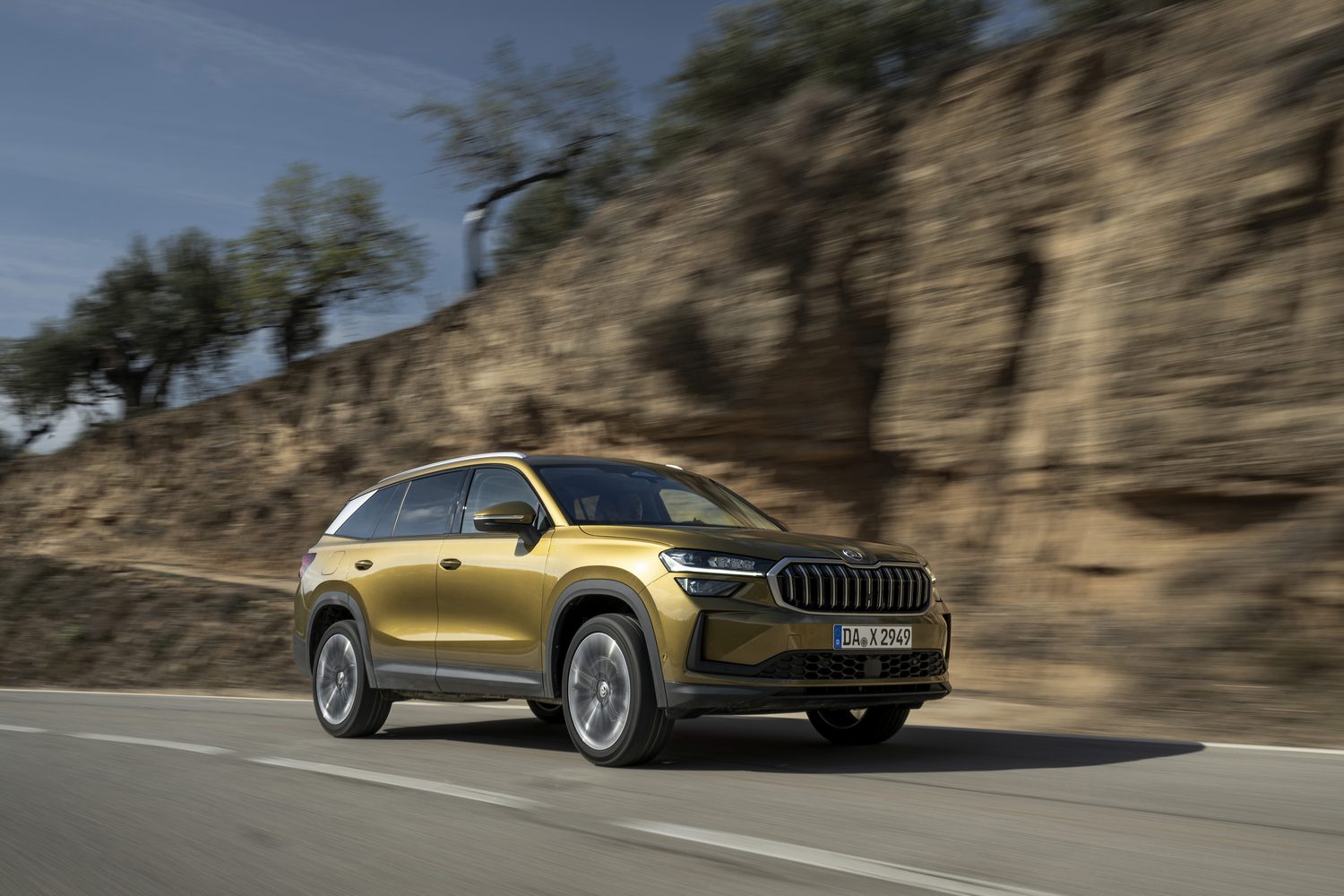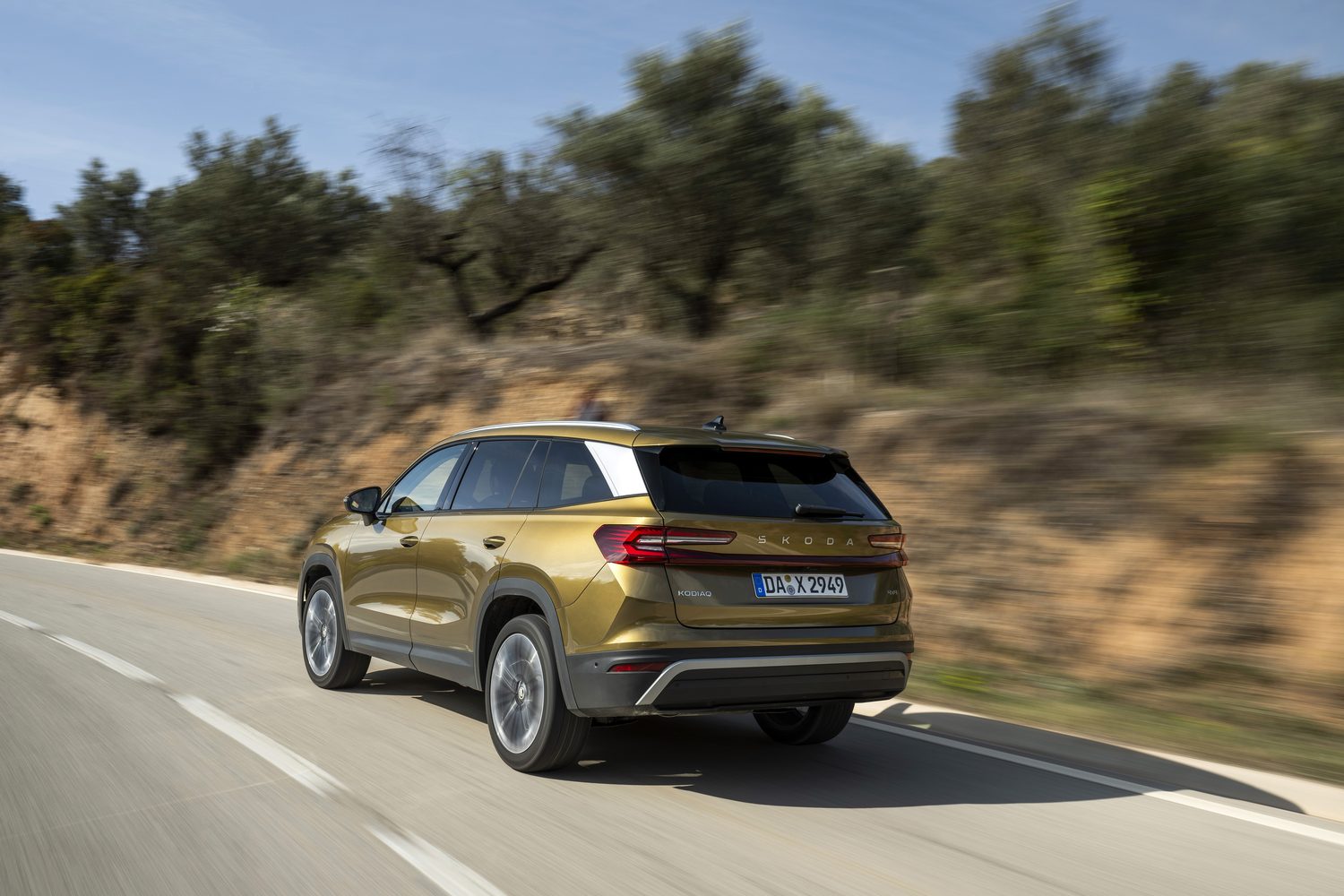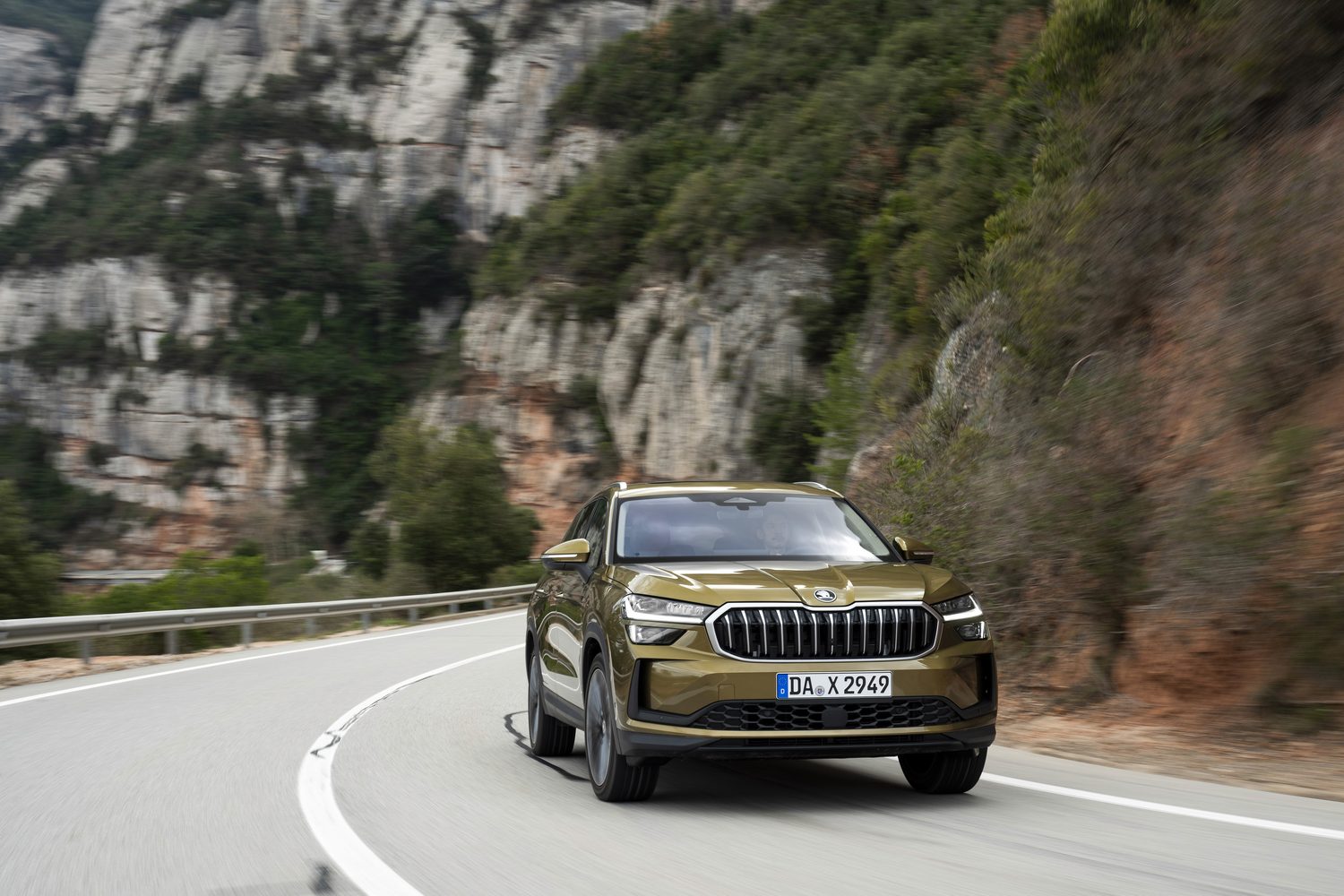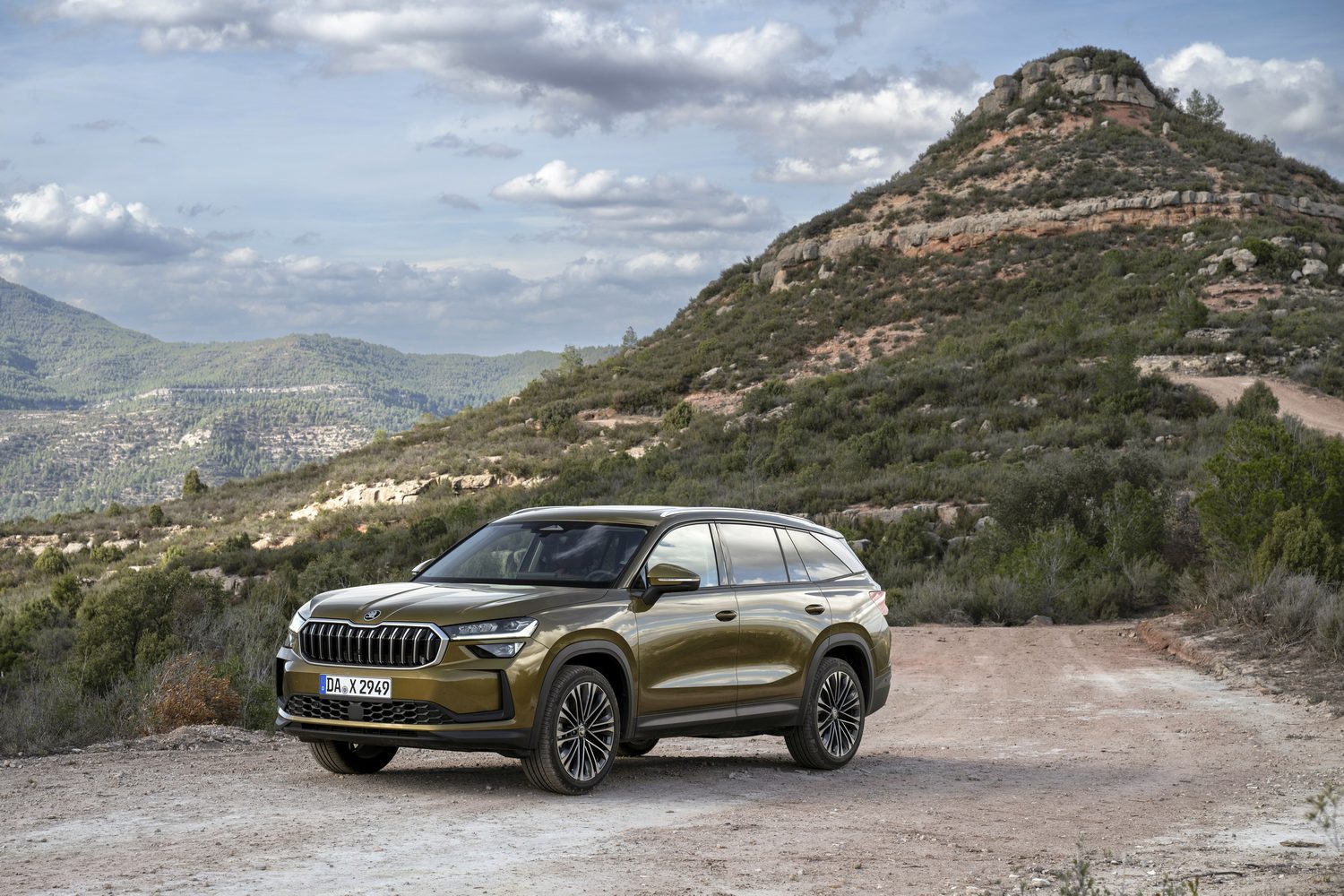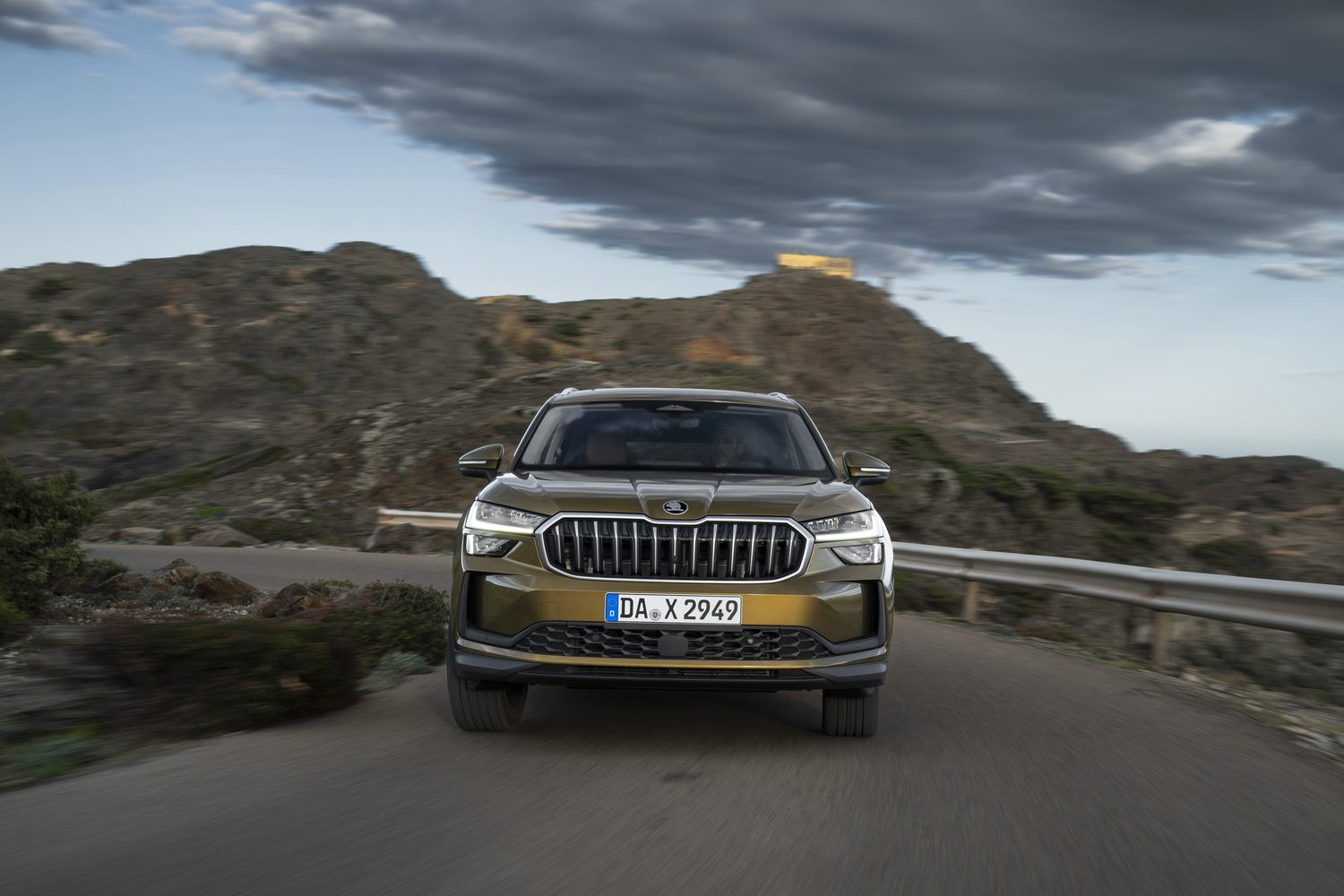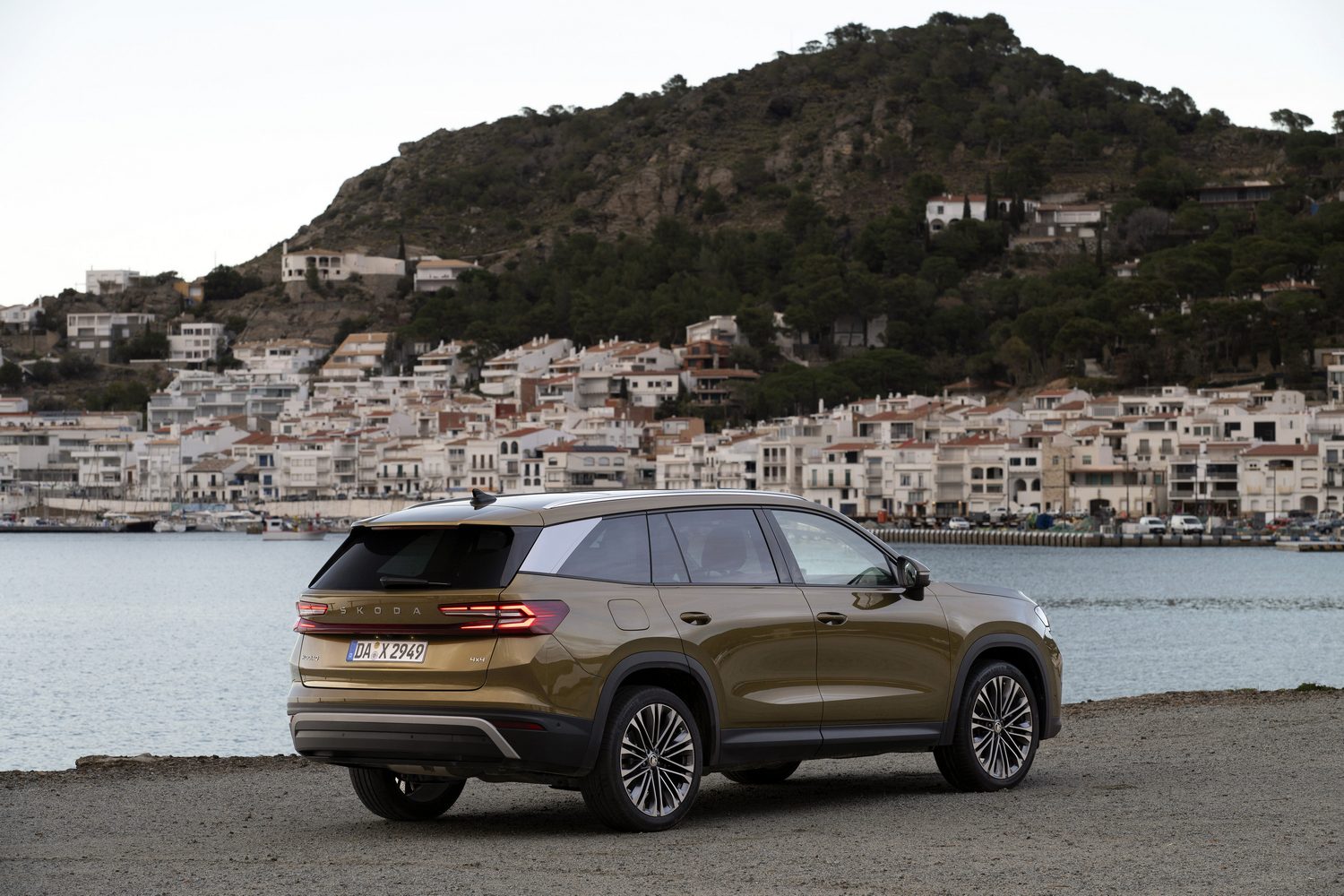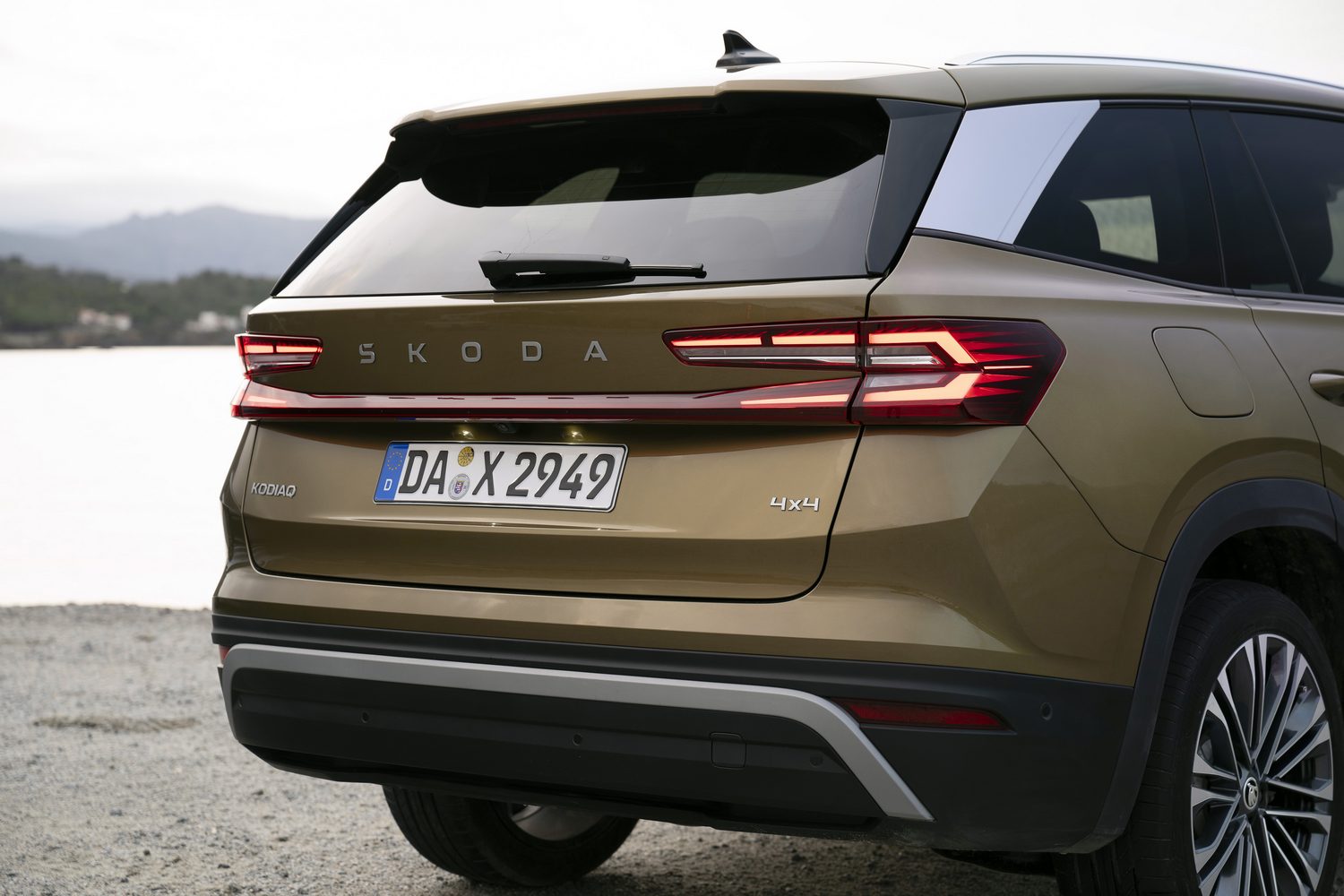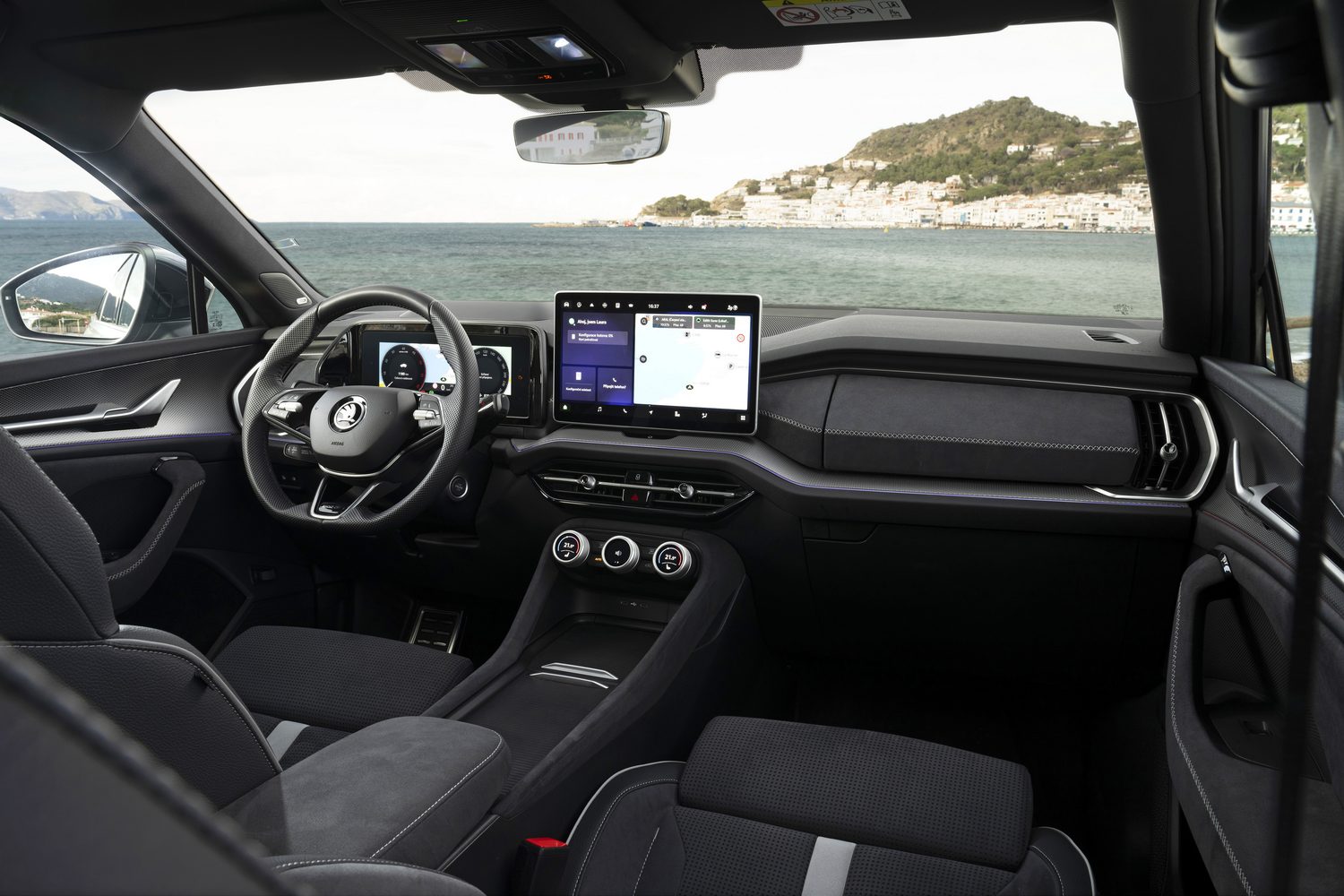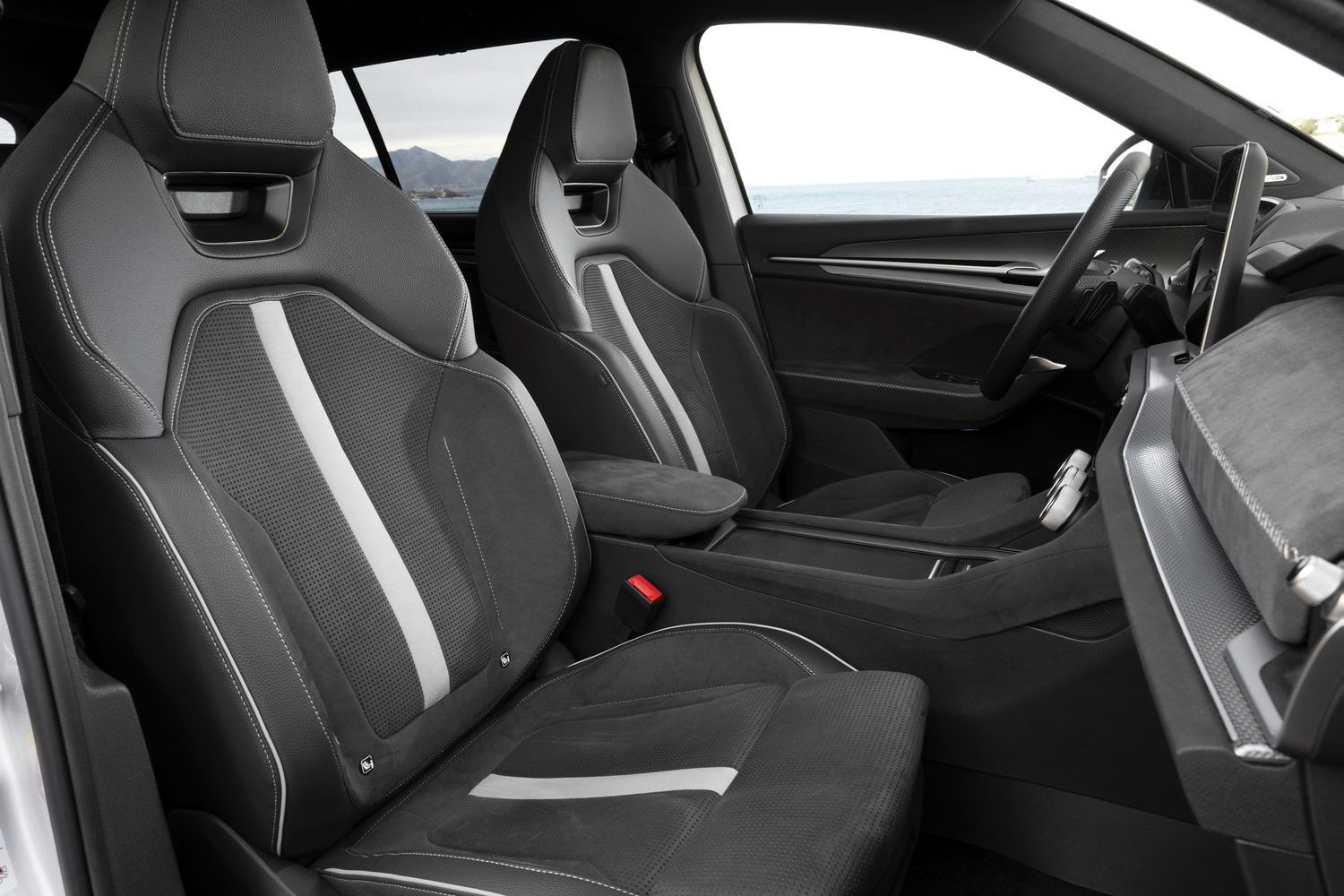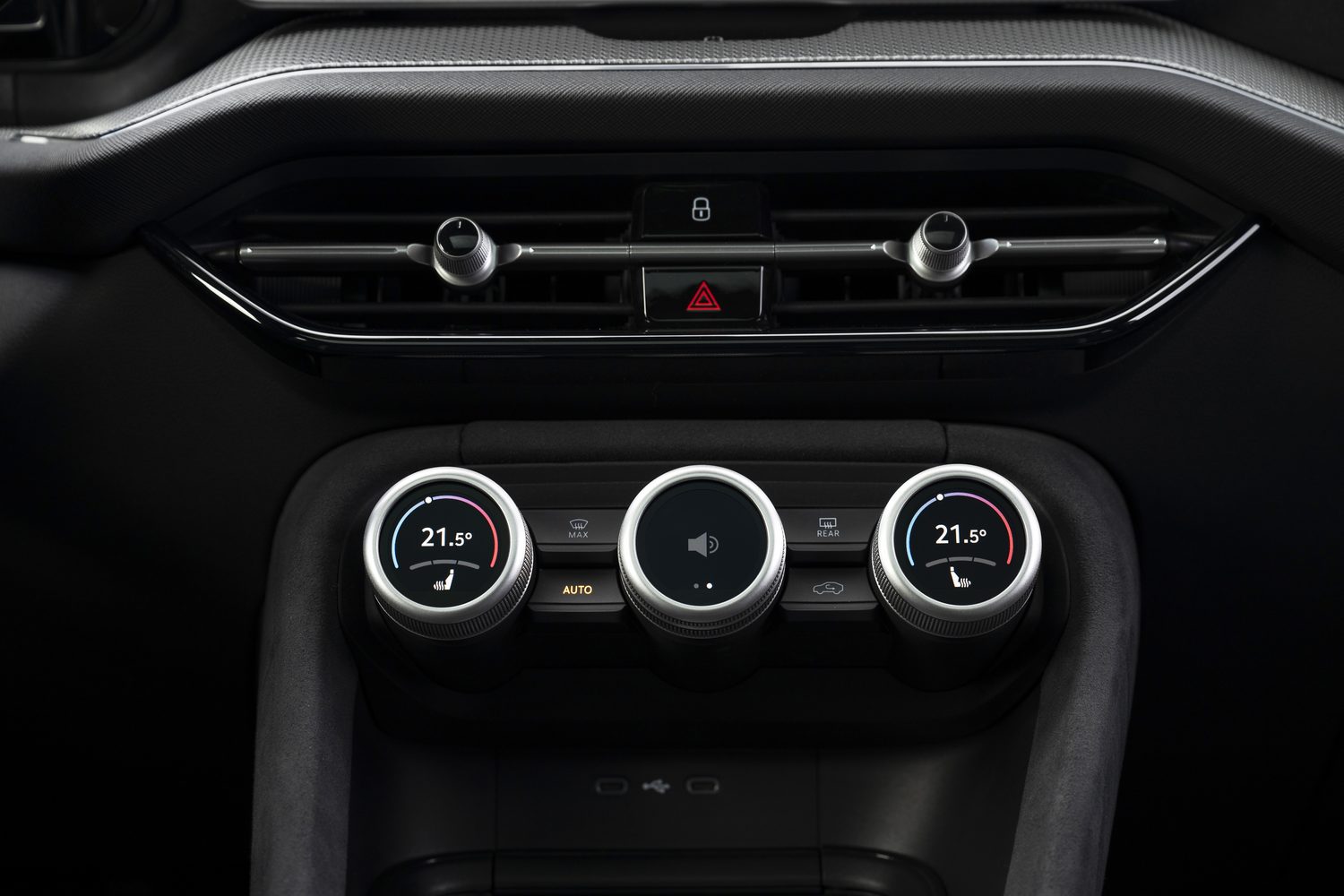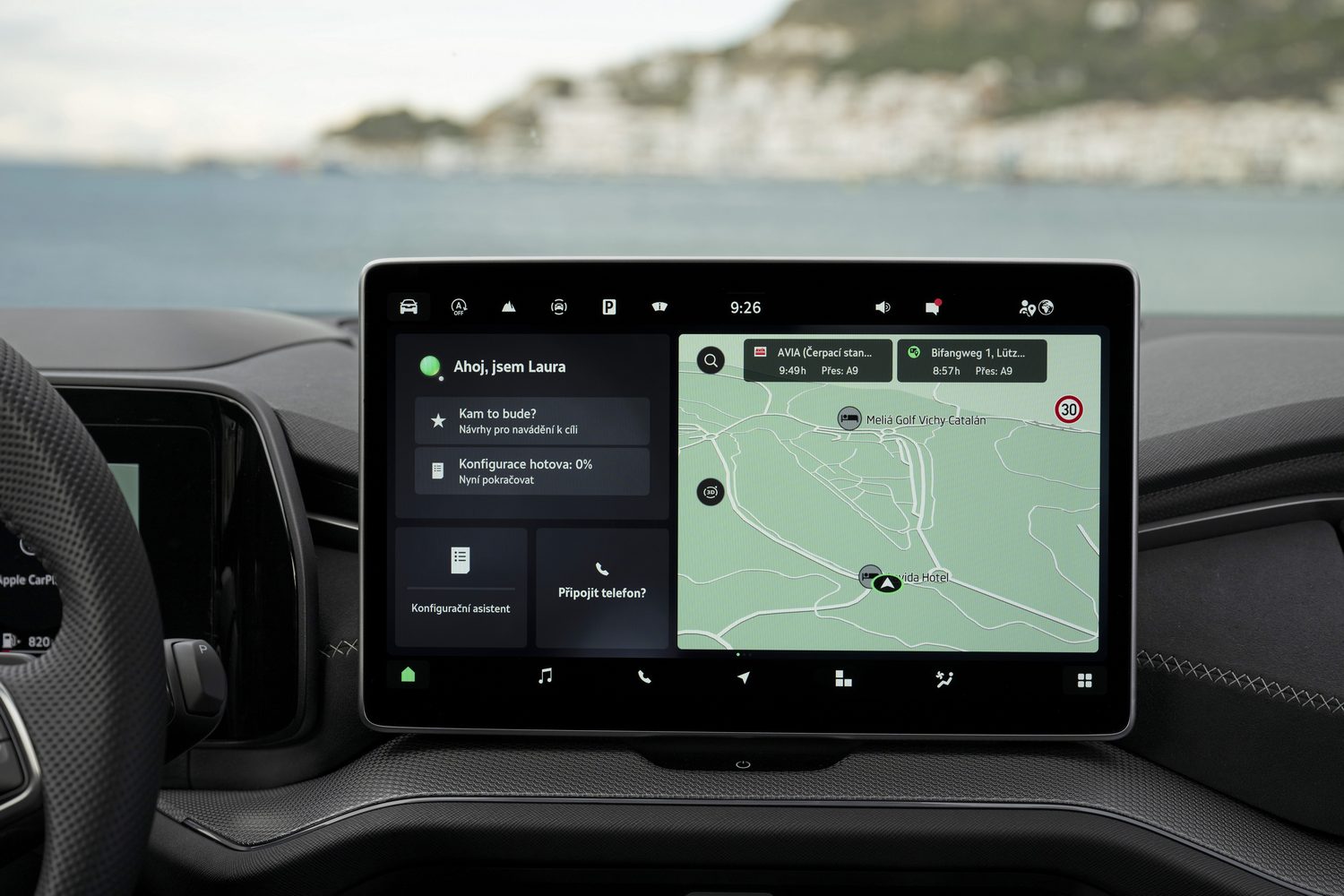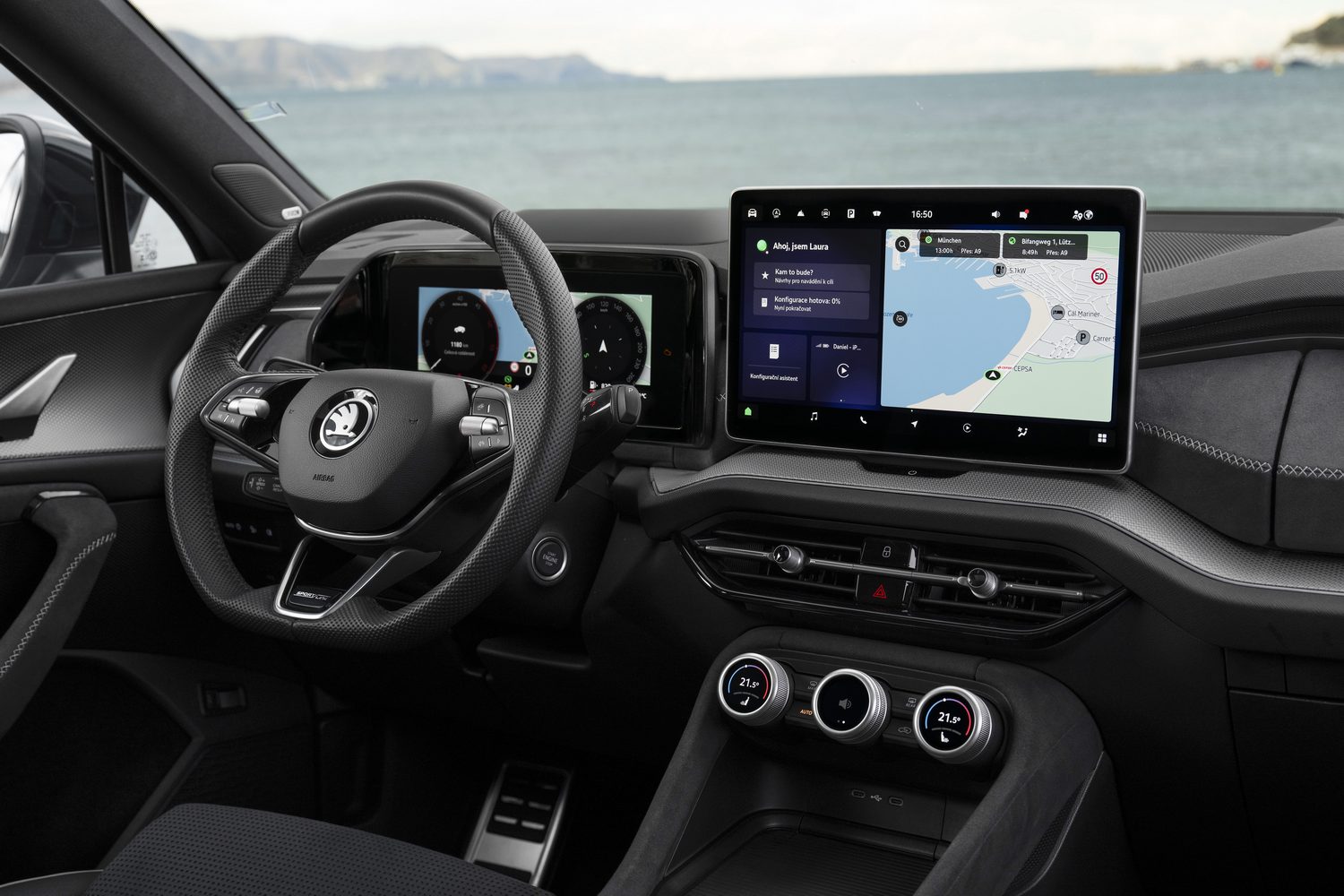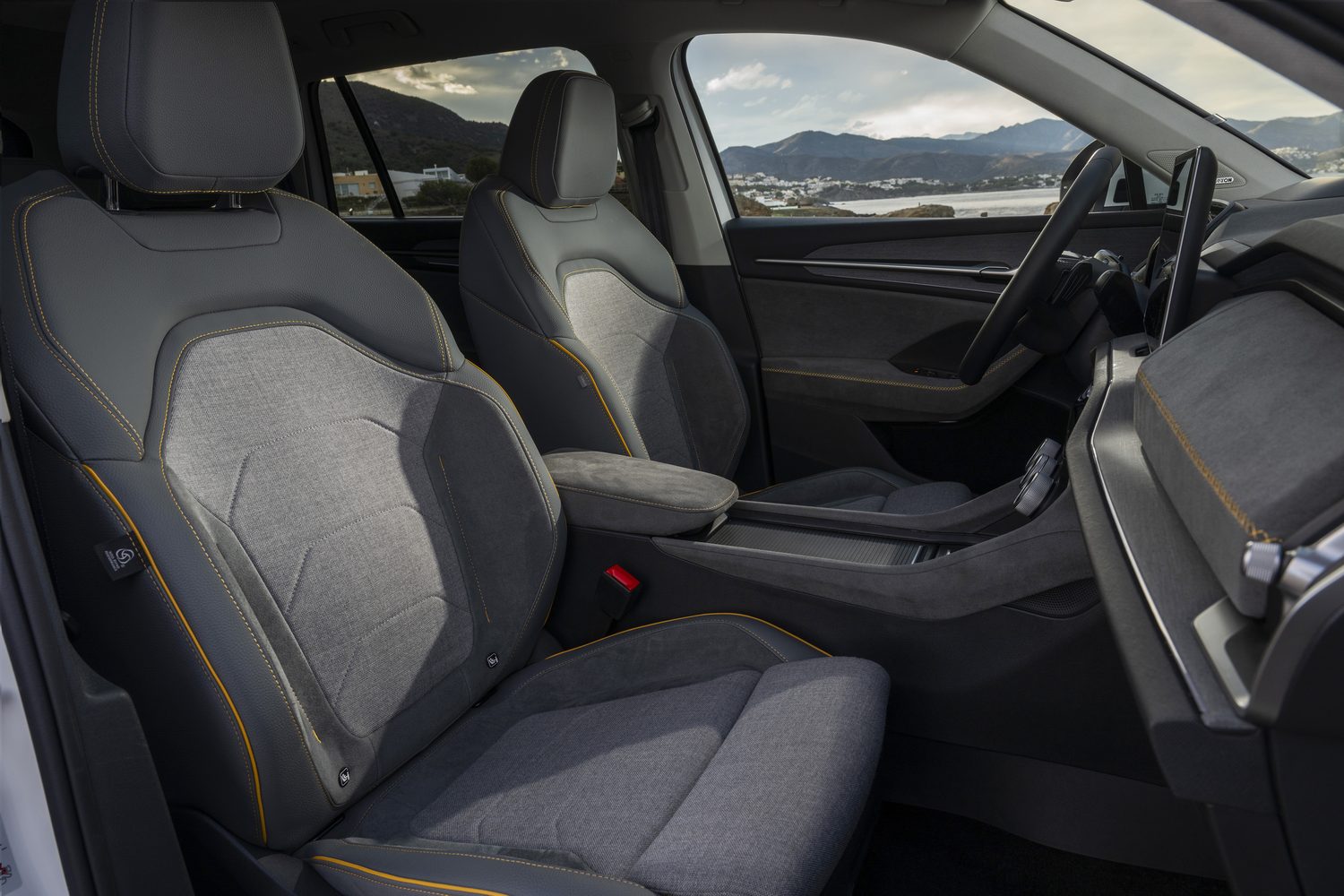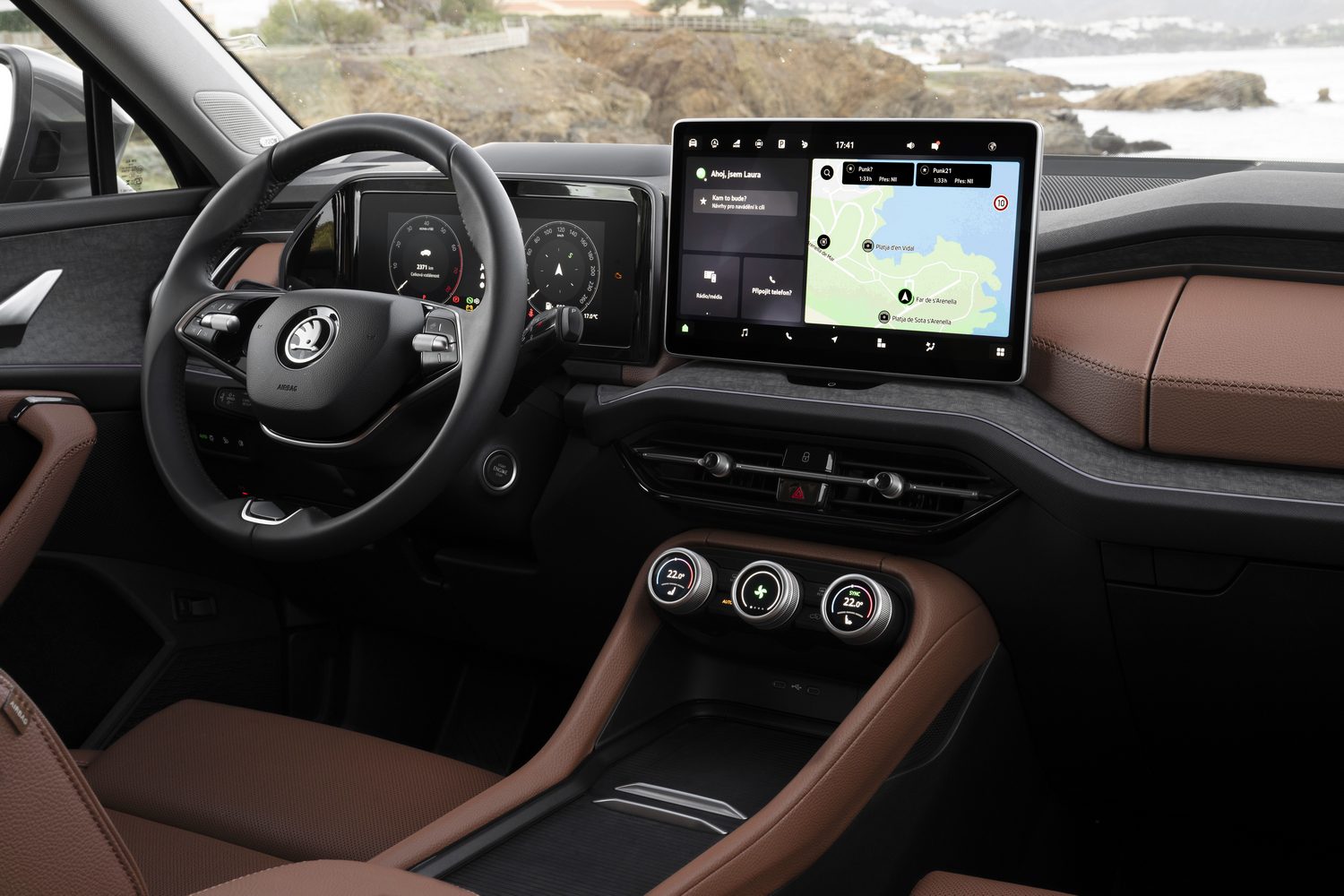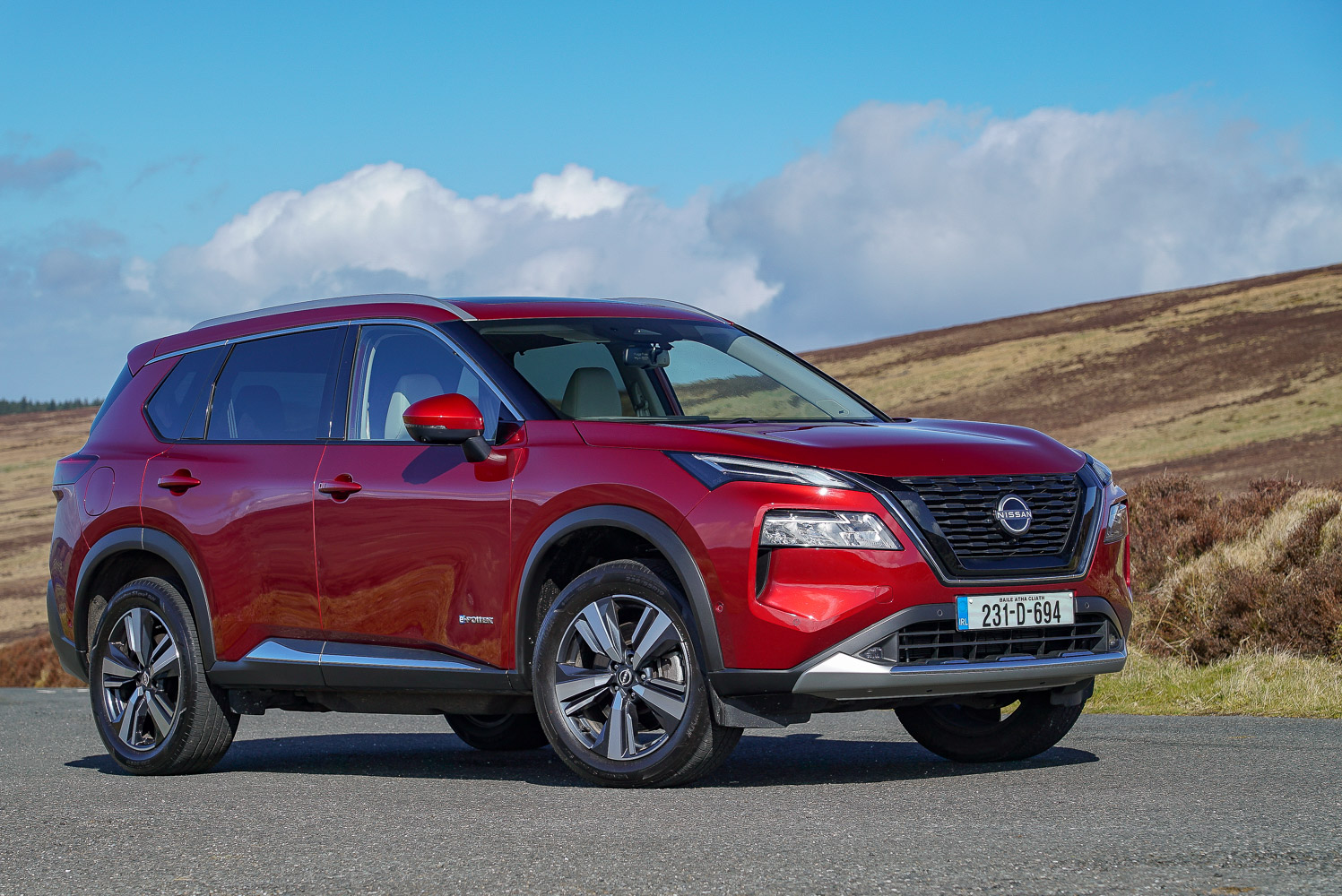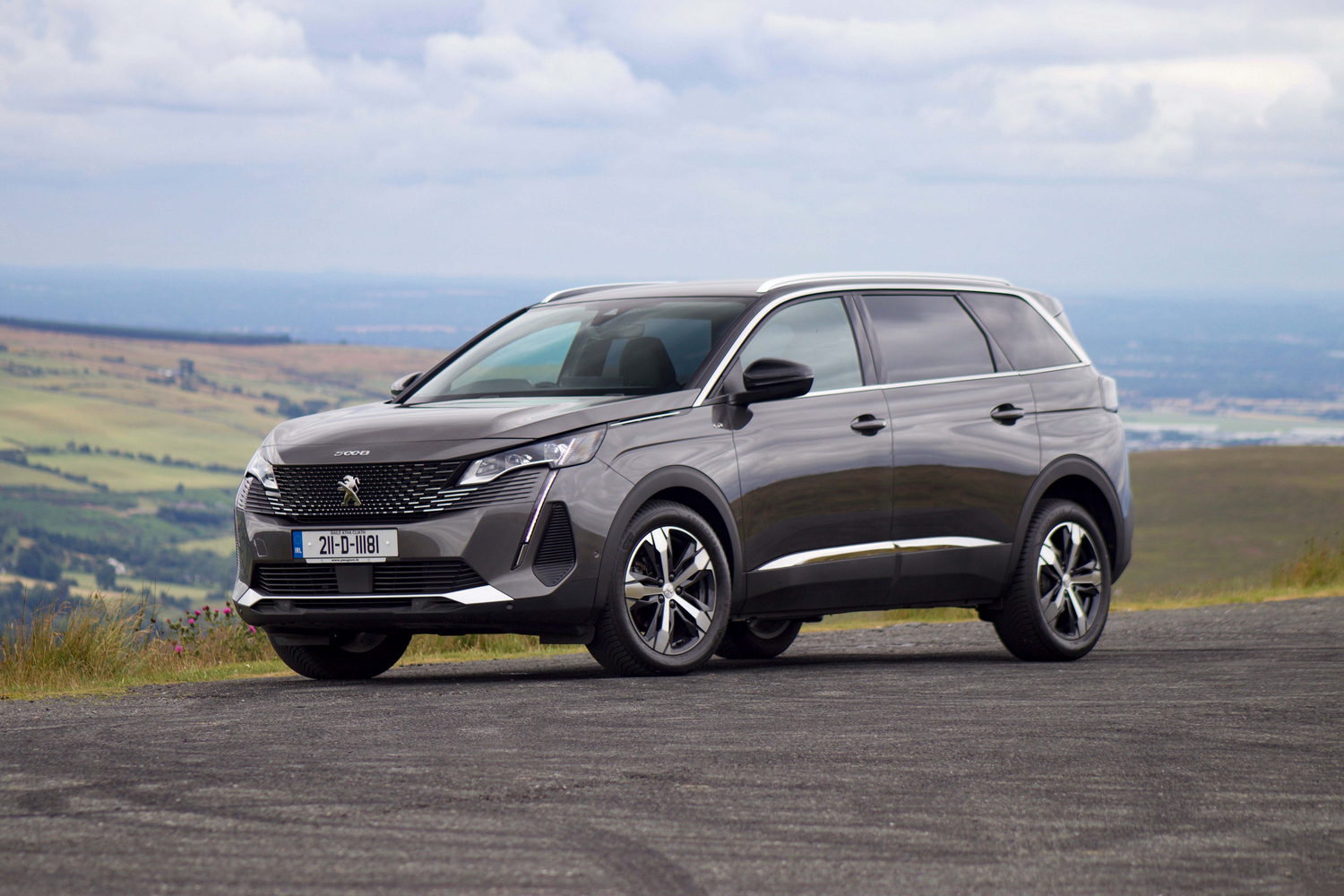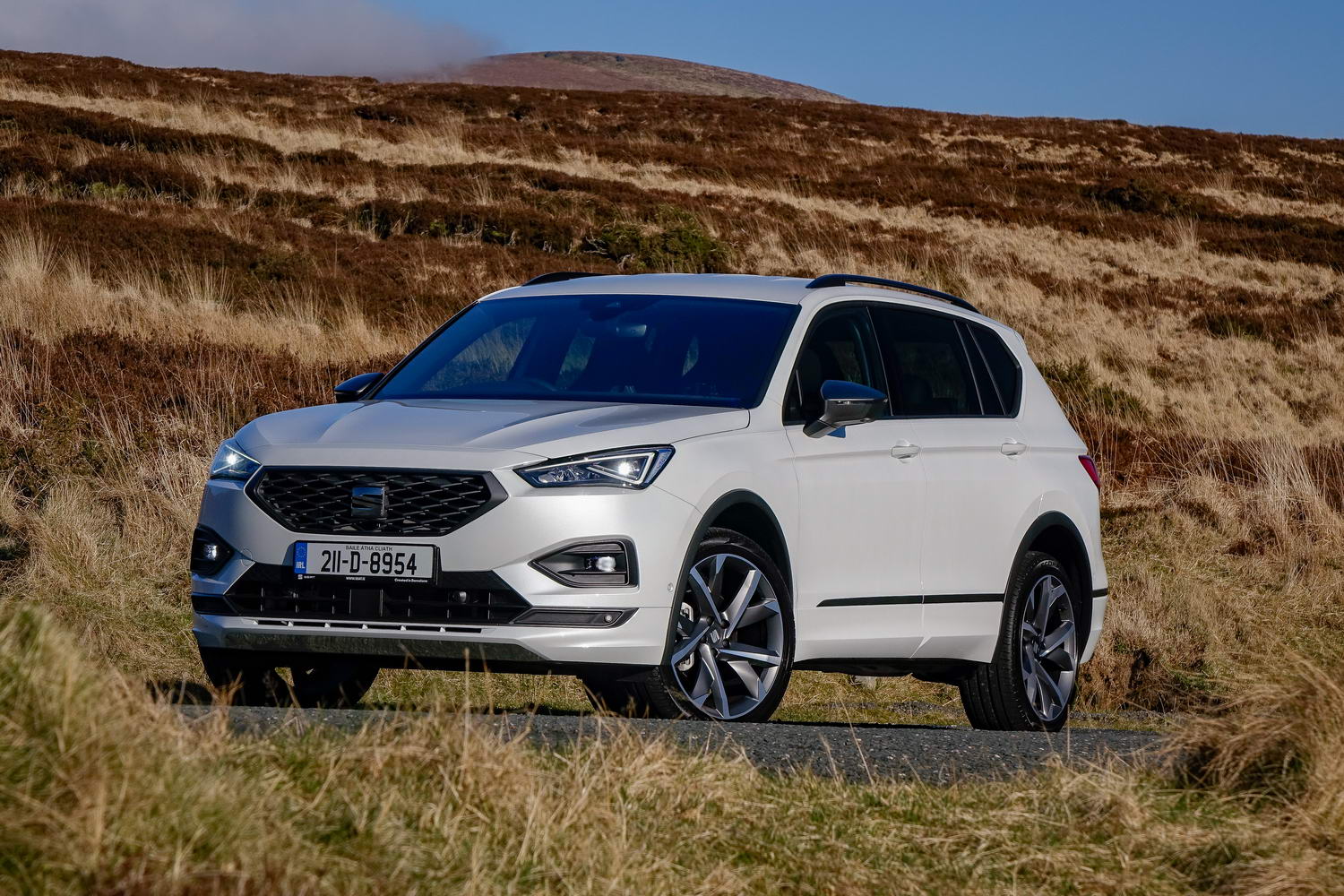Skoda struck gold with the Kodiaq when it launched, offering space, value and capability in one family-friendly package. And customers bought it in their thousands. Now the time has come for a new Kodiaq to take the reins, promising to woo buyers old and new with greater efficiency and technology, as well as a contemporary design inside and out. It all sounds great, but is the finished article all it's cracked up to be? Can Skoda possibly have improved on the original?
In the metal
It's fair to say Skoda has made lots of changes to the Kodiaq's design, yet it still hasn't completely changed it. There's a new nose, complete with a grille inspired by that of the equally-new Skoda Superb, and new headlights, as well as a more sculpted body and a completely new roof design. Yet it's still recognisably a Skoda Kodiaq.
If we're honest, some of the tweaks are more successful than others, with the roof and basic shape giving it an air of modernity and class, while the front grille looks as though it was stolen from the old Suzuki S-Cross. Overall, we aren't convinced we'd call the changes improvements per se, but they haven't spoiled the design altogether.
Equally, we remain unconvinced by the 'Bronx Gold' paintwork that adorned our test car. A sludgy cross between yellow, brown and green, it's destined to be a love-hate option, and one that might impact the car's resale value going forward. All things considered, we'd prefer a more muted tone - of which there are plenty.
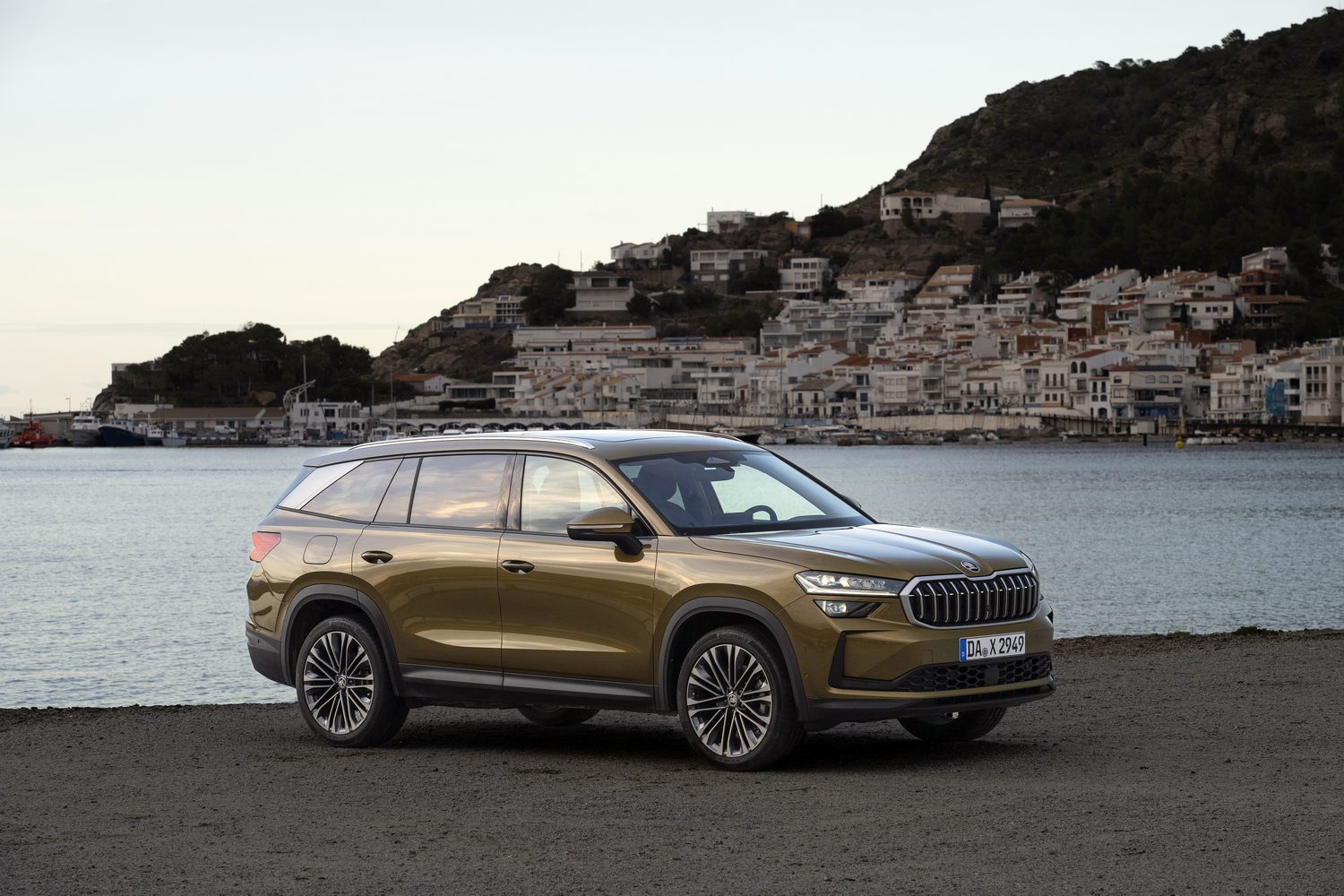
We are more taken with the new Kodiaq's interior, though, where we find yet more inspiration from the new Superb. That means you get the same two-spoke steering wheel that's now common in Skoda products, as well as a smartly designed dashboard and some comfortably sculpted seats. The new steering column-mounted gear selector has allowed for more storage in the centre console, and though it feels odd at first, you'll soon get used to it. A choice of great upholstery options, including a premium-feeling cloth with colourful stitching and more conventional leather interiors, also makes it feel more upmarket.
Over the years, we have come to expect Skodas to be well built, and the Kodiaq doesn't disappoint on that front. Every panel feels neatly slotted alongside its neighbours, and the buttons all feel reassuringly robust. It's every bit as solid as its predecessor.
It's even more spacious, though, with a boot that could easily be classed as 'massive' by any measure you care to use. Buyers get a choice of five- and seven-seat variants, with the seven-seat options such as this offering 340 litres of space with all seven seats in place (only a little less than you get into a Volkswagen Polo's boot) and 845 litres with the back seats stowed is more than generous. Fold the middle row down and you're looking at 2,035 litres of room.
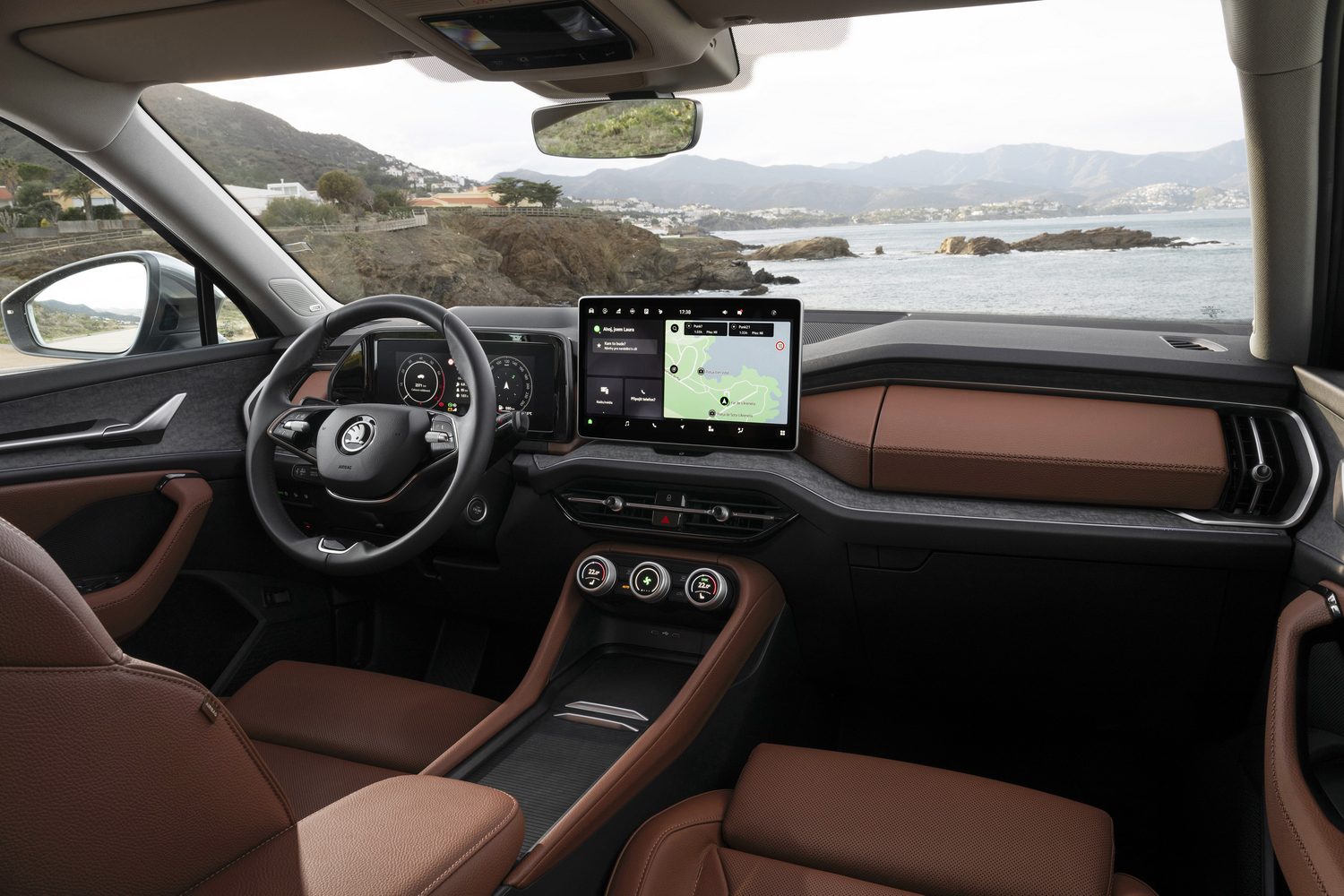
Plug-in hybrid five-seat versions of the Kodiaq have less space, it's true, but even they are roomy, with 745 litres of capacity in five-seat form and 1,945 litres when the back seats are down.
As before, the seven-seat versions only really offer 'occasional' seven-seat capability, with enough space for kids in the third row, but the tallest grown-ups will find accessing the rear a bit of a challenge. Once they're in, the space in there is cramped, and that's assuming those in the second row slide their seats forward a bit, sacrificing a little legroom. It's acceptable for short distances, but not on long journeys.
Further forward, though, space is ample, with lots of room in the front and second row of seats, both in terms of head- and legroom. Elbow room is good in the front, too, so you don't feel as though you're constantly clashing with your passenger, and there's loads of storage in the cabin.
But for all the Kodiaq's practicality credentials, the tech is Skoda's focus. The dashboard has been adorned with a new 15-inch touchscreen that uses Skoda's latest technology. And while we've had a few harsh words for Skoda's infotainment technology of late, the new system is an improvement. It isn't perfect - some hesitancy still irritates, and it takes a bit of getting used to - but the menus are easier to navigate, and the addition of new 'taskbar' shortcuts has made life a bit less challenging by putting useful commands in easy reach. The digital instrument cluster is clear and configurable, too.
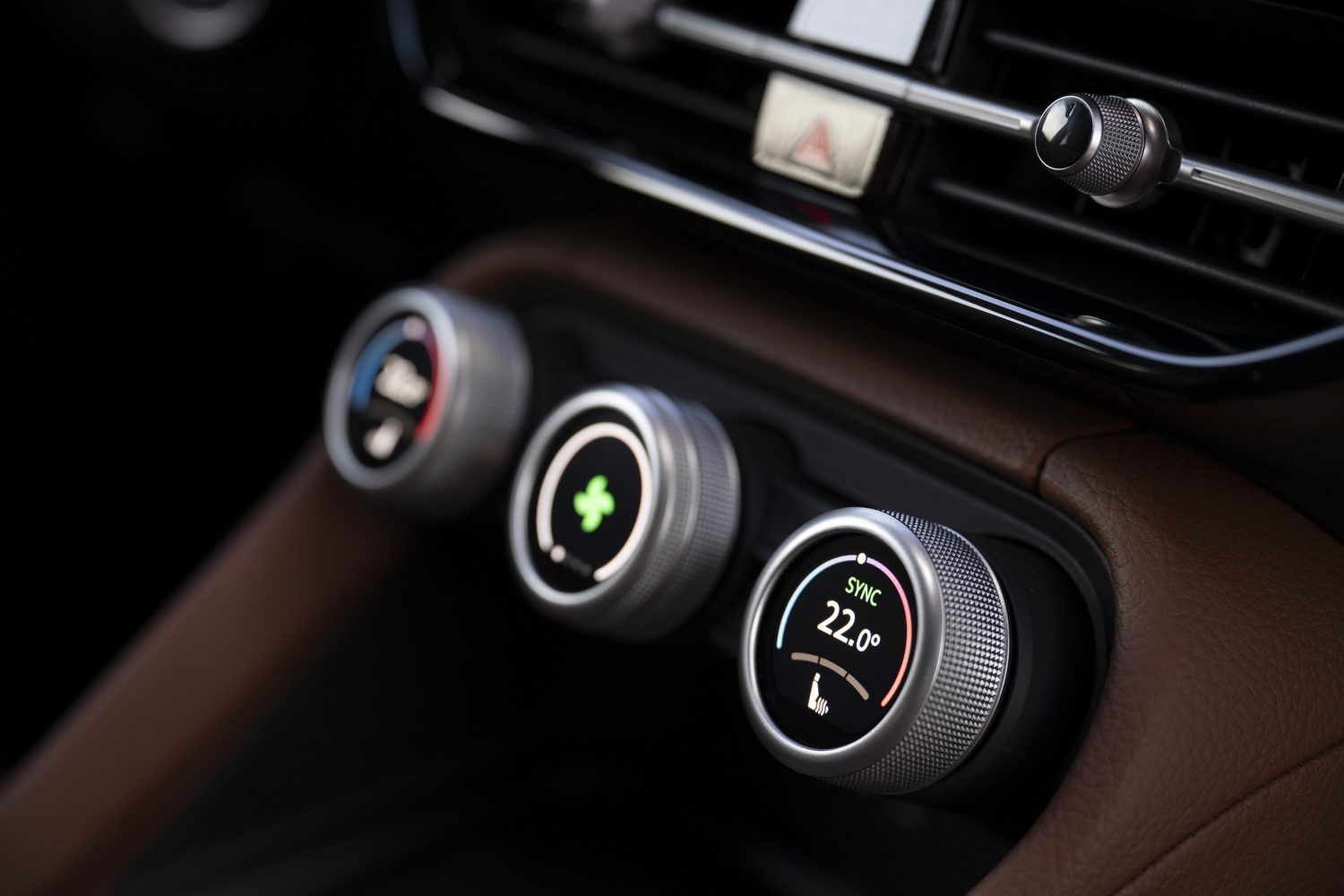
Yet the real triumph is the decision not to put the climate control system in the touchscreen, as Skoda has done with the latest-generation Enyaq electric SUV. Instead, there's a neat bank of three rotary dials in the centre of the dashboard, giving owners quick and easy access to the temperature and seat heating controls by touch. That makes using the system less distracting, which makes things much easier and safer. Other car makers, take note: this is how you keep a cabin minimalist and ergonomic.
Driving it
Skoda has made much of the Kodiaq's new engine range, which includes a 1.5-litre plug-in hybrid option, but we reckon the 2.0-litre diesel engines are still the most appealing.
That's what we're testing here, and we haven't got the basic 150hp, front-wheel-drive option - this is the 193hp, all-wheel-drive variant. Admittedly, most drivers won't spot the difference most of the time because both are essentially the same engine, and both come with a seven-speed automatic gearbox as standard. However, the extra 43hp makes its presence felt when you put your foot down, and the all-wheel-drive system fitted only in combination with the more powerful engine will come in useful off-road, or when the snow falls.
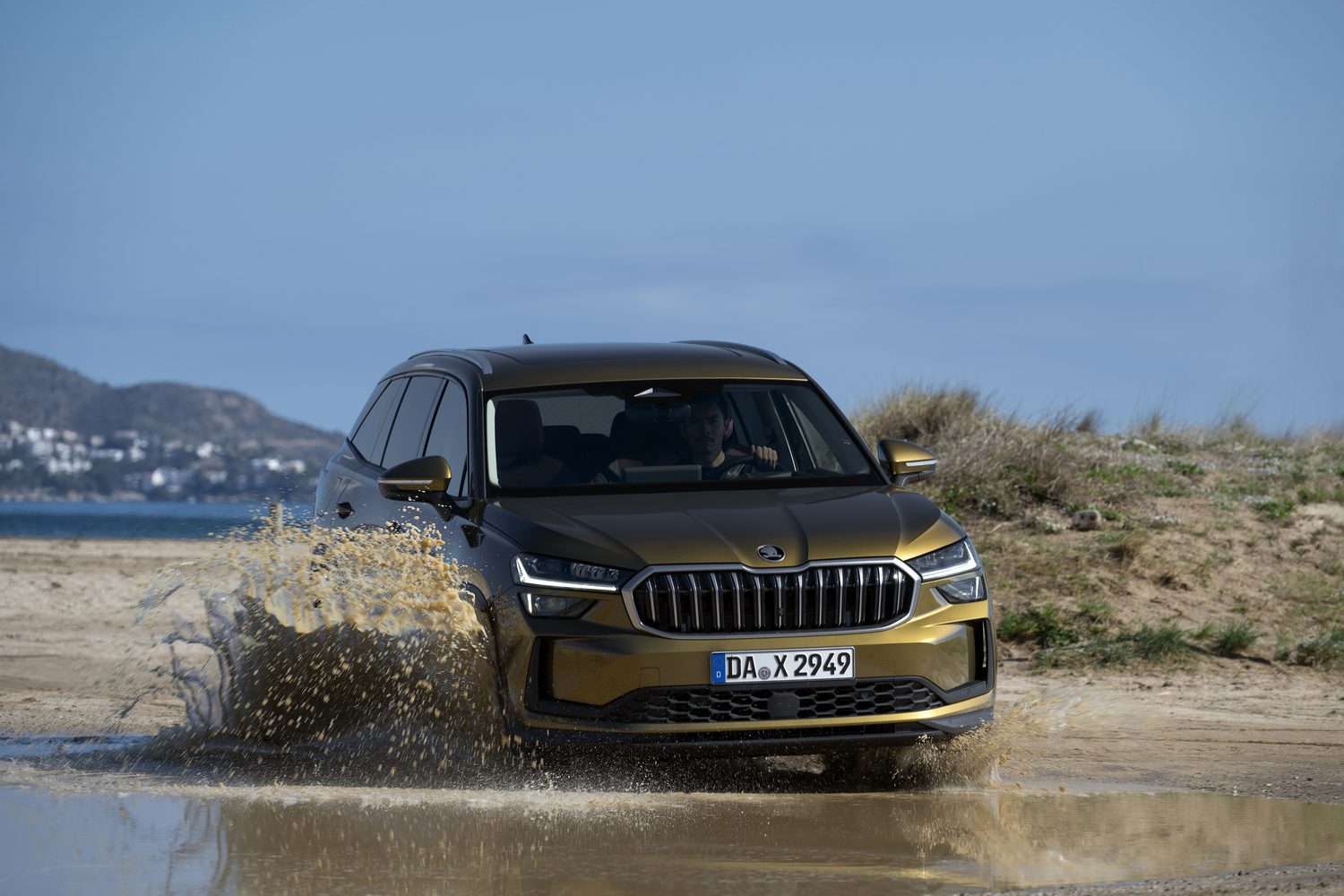
Either way, the diesel Kodiaq is quick enough to make strong progress without feeling too dramatic. You'll have no problem keeping up with traffic with either engine under the bonnet, and you'll get sensible economy, too.
The 150hp diesel engine should burn around seven litres of fuel every 100km, and we're expecting reasonable CO2 emissions, while the all-wheel-drive option won't impact that efficiency too greatly.
And you won't even have to worry about the noise, which has often been a drawback of diesel engines. It's true, the diesel Kodiaq is a little gruffer than its petrol-engined siblings, but it's still relatively hushed compared with diesel engines of old. Unless you put your foot down, you'll barely notice it.
And that's good news because refinement is a strong suit for the Kodiaq. Although it may have a big body to haul around, it's surprisingly aerodynamic, and that means it cuts through the air quite cleanly, helping with efficiency and wind noise. There isn't too much roar from the tyres, either, which helps to keep things relaxed in the cabin.
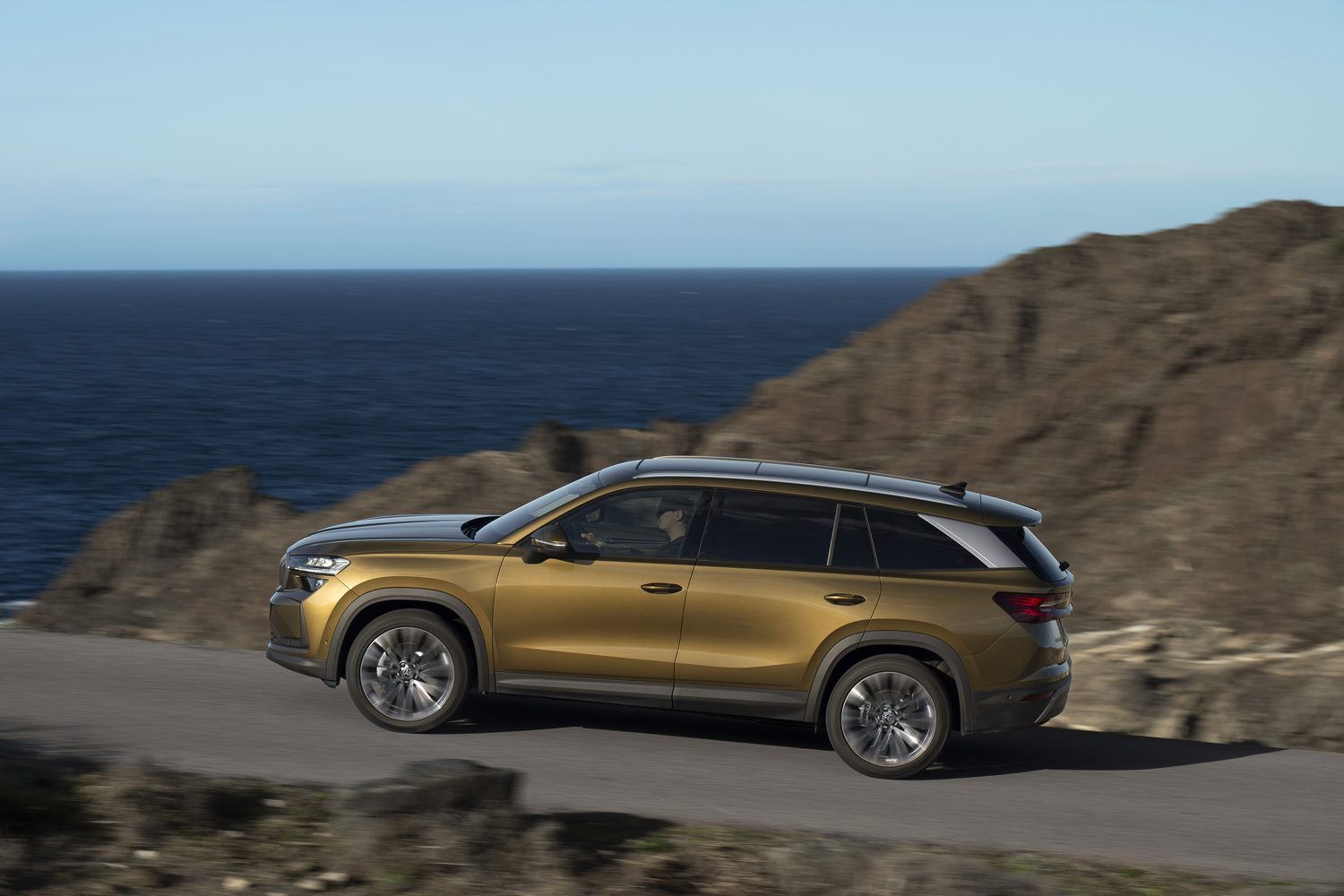
First impressions also suggest the suspension will help on that front. Admittedly, our test drive took place on the smooth roads of the Costa Brava, but the Kodiaq proved supple and cosseting, soaking up the few bumps there were with impressive composure. We suspect it won't be the most comfortable car on the road when faced with more demanding road surfaces of Ireland, but we don't expect it to pound our pelvises to dust, either. It should prove more than comfortable enough.
And it balances that comfort with decent stability and cornering prowess, thanks to suspension that offers ample body control, preventing lean in corners and excessive pitch under braking. It isn't quite as agile as the Skoda Karoq, and the steering is a bit too light and numb for our liking, but it's reasonably precise.
The other upside of this range-topping diesel option is its off-road capability. The all-wheel-drive system gives it ample traction on any surface, and gadgets such as hill descent control are there to help you out. It's not as rugged as a pick-up truck, but it'll offer more off-road ability than most will ever need.
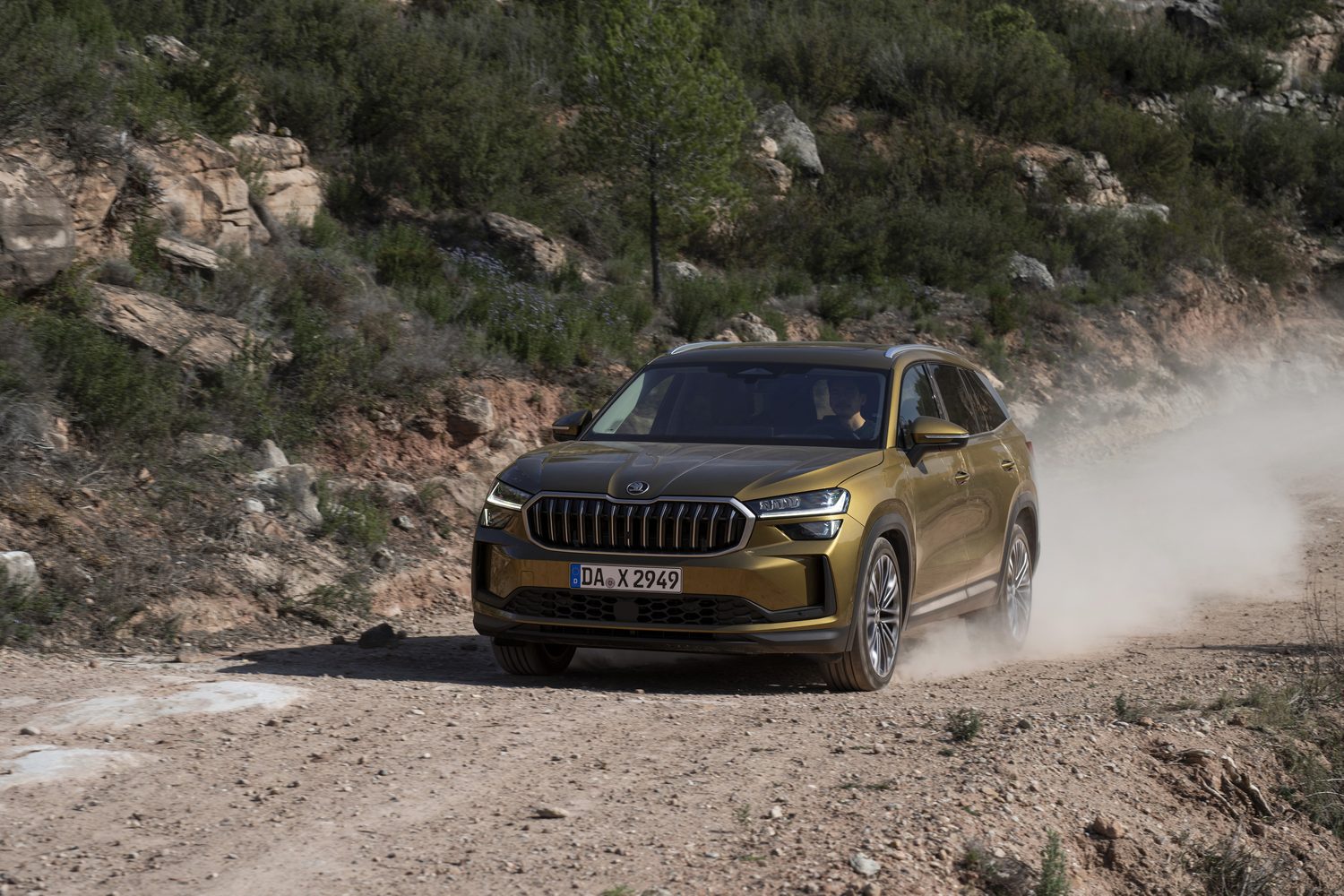
What you get for your money
Kodiaq prices start at €53,670 in Ireland for the basic 2.0-litre, 150hp diesel variant, which makes the Kodiaq a tad more expensive than the basic Nissan X-Trail, but that isn't the full story. For a kick-off, the Kodiaq gets seven seats as standard, and the cheapest seven-seat X-Trail is almost €6,000 more expensive than the Kodiaq.
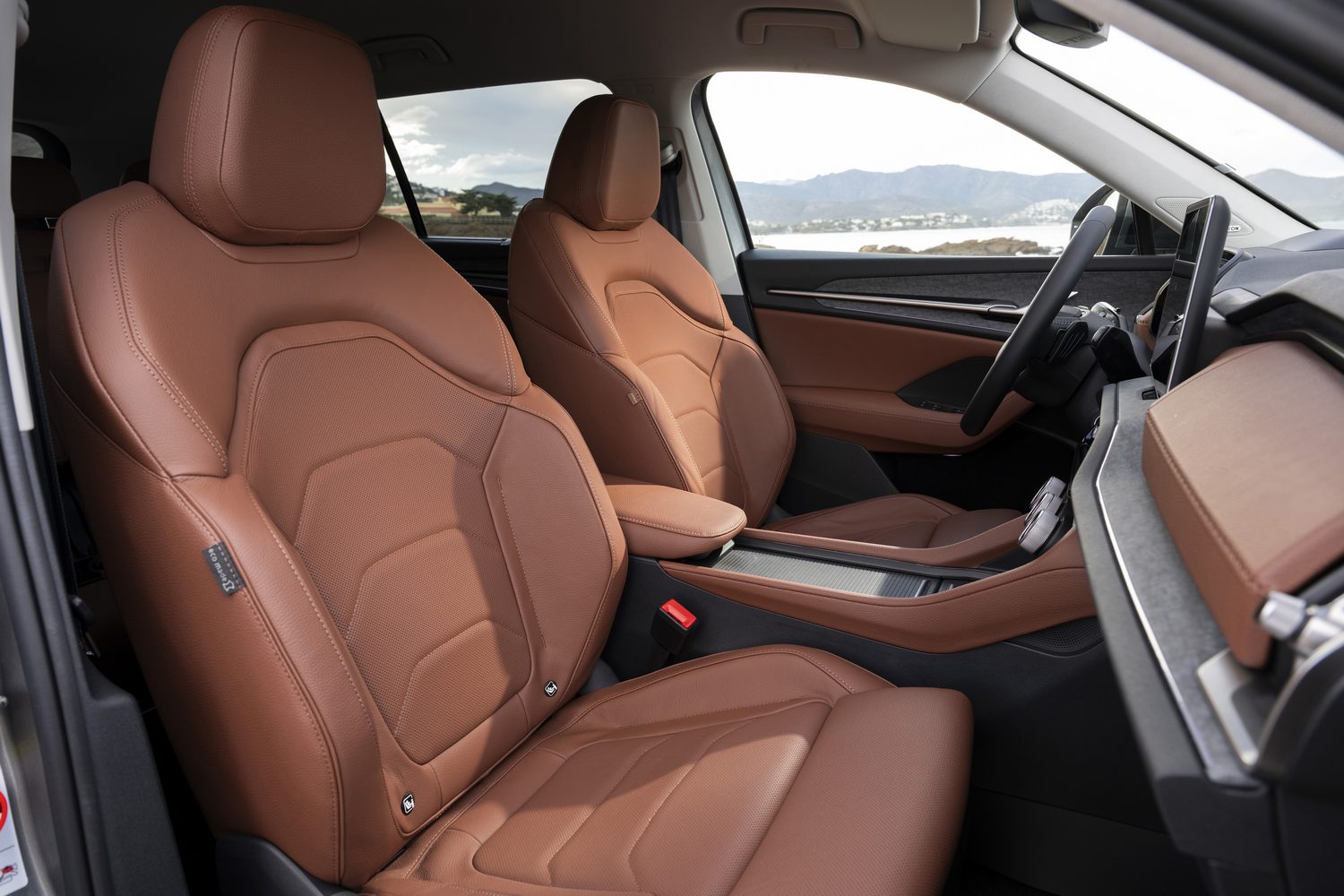
And it isn't like the Kodiaq is badly equipped, with basic Selection models getting adaptive cruise control, three-zone climate control and a digital instrument display, as well as heated front seats, a reversing camera and an electric tailgate. It has everything you need, though the Selection+ adds leather upholstery and 19-inch alloy wheels, as well as silver roof rails and privacy glass.
Summary
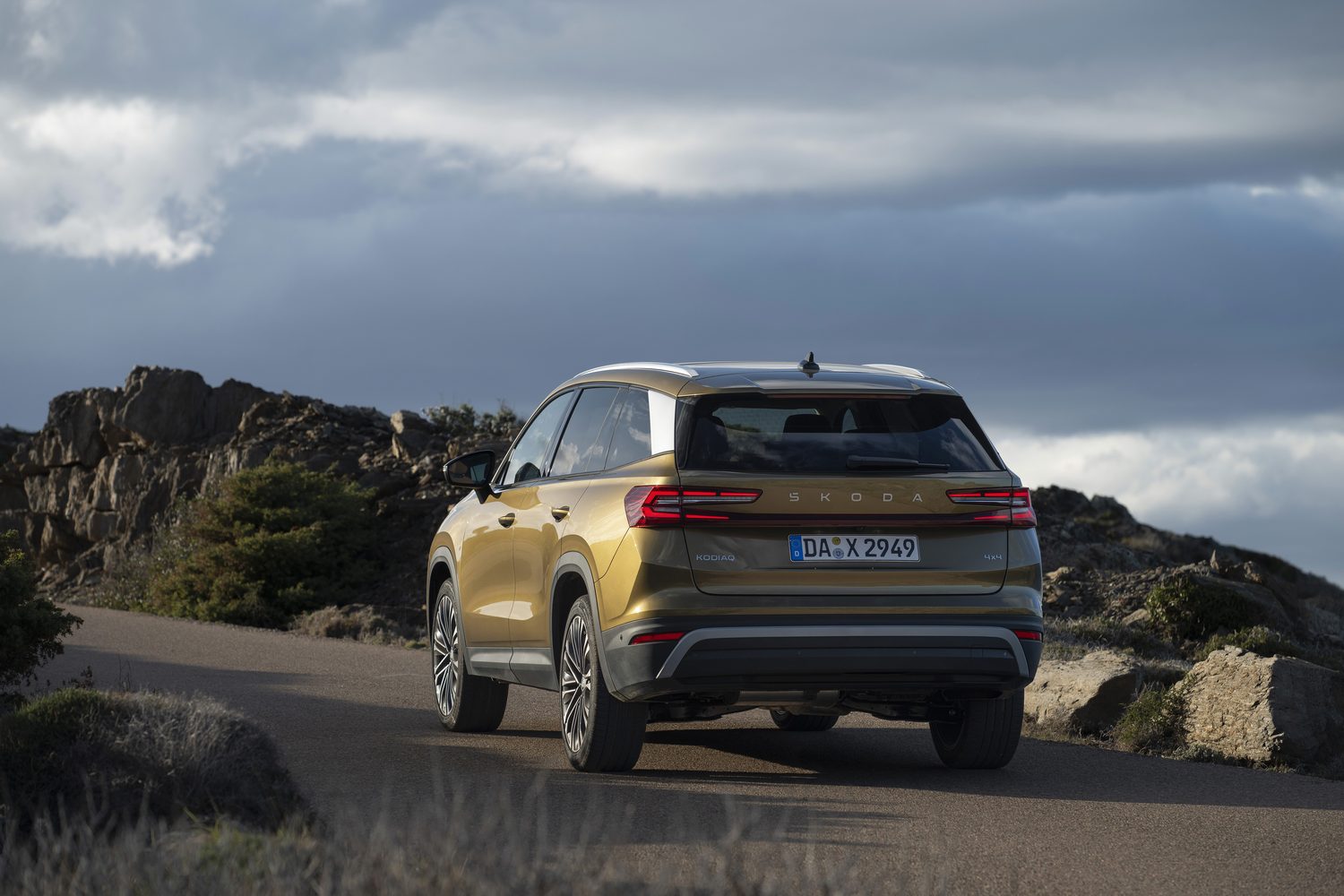
The new Skoda Kodiaq doesn't offer much in the way of surprises, but that's no bad thing. By improving in all the right places, with a more stylish cabin and more modern technology, while maintaining existing levels of comfort and class, the new Kodiaq is exactly what we wanted it to be: one of the best family SUVs you can buy.

